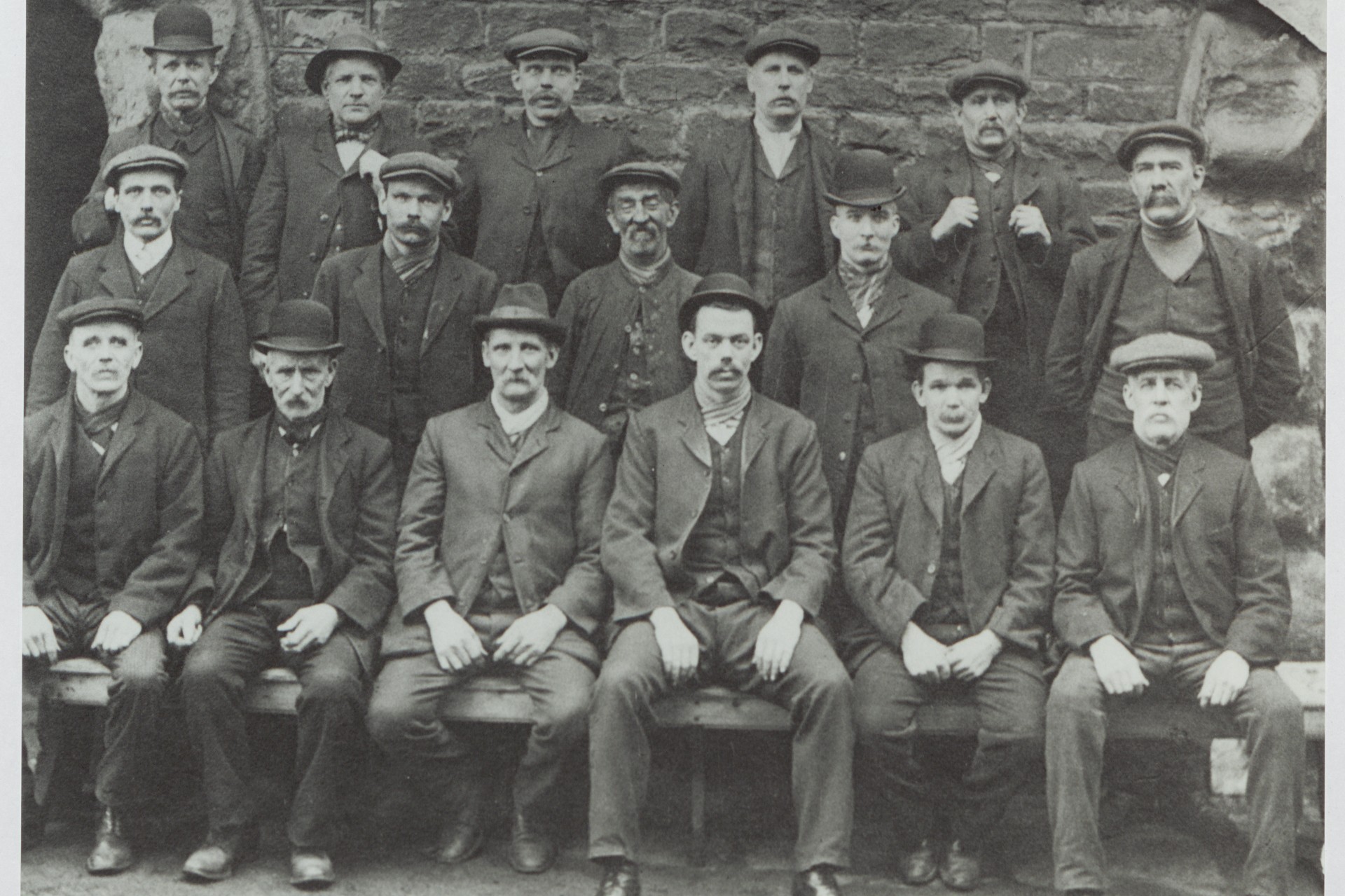
Drawing of the front of Bristol Gas Company in 1919 by Samuel Loxton Bristol Libraries

Avon Street employees photographed in 1910 Bristol Archives collection 28777

Bristol Gas Company brass band on the steps of the Victoria Rooms Bristol Archives collection 28777
Innovations in St Philips, Bristol 200 years ago mirror transformations to the way we live and work today according to a new report by the University of Bristol.
'Avon Street Gasworks and Bristol Gas Industry' marks the start of a move into Bristol Temple Quarter Enterprise Campus for Bristol Digital Futures Institute (BDFI) and examines the social and industrial history of their new buildings.
The site on Avon Street, St Philips is the former headquarters of the Bristol Gas Company, the company that introduced gas and gas lighting to the city. Historians have now highlighted both the positive and negative impacts of this new technology for the city.
BDFI is now appealing for local people to come forward with memories, images, documents or artifacts associated with The Gas Shed or Retort House, the former headquarters of the Bristol Gas Company or its later use as the Vauxhall Drive Garage.
Issues around working conditions, industrial action, the impact of war, the role of women in the workplace, the development of the night-time economy, crime, pollution, domestic life and the transformation of local businesses and industry all feature in the report.
Highlights include:
- How improved lighting meant that people could now work at night, paving the way for the night-time economy and changing concepts of time away from agricultural rhythms.
- The new gasworks, although dangerous, represented a steady and secure new source of employment.
- The Bristol Gas Company can be linked to every large industry in Bristol during the last 200 years including Filton Aeroplane company, Wills Tobacco and Frys and Sons. The Bristol Old Vic was also an early customer.
- During the Second World War George Jones, gas attendant knocked two incendiary bombs off the top of the Folly Lane gas holder near Avon Street, receiving the George Medal for his efforts. There is a plaque on the wall on the corner of Folly Lane and Days Rd.
- Gas changed the lives of women in Bristol, not just through new employment opportunities but in the home being sold for cooking and washing as the 'fuel of the future'.
- Although gas was a significant source of pollution, with by-products entering the air and water-systems, the industry was effective at marketing itself as environmentally-friendly, winning awards from the Royal Sanitary Institute.
Co-author of 'Avon Street Gasworks and Bristol's Gas Industry' and University of Bristol Lecturer in Public and Creative Histories Dr James Watts said:
"The gas works at Avon Street opened in 1821, sparking 200 years of innovation in this corner of St Philips and is intimately tied into the history of Bristol. Gas changed the way everyone lived and worked. It affected the health and wellbeing of residents and drove new social and technological change.
"I hope we can find out more personal stories and memories from the site. What I want to know about the site are these personal stories of someone's Grandfather who was a stoker or captained the gasworks' football team.
"I hope this report inspires academic questions about the legacy of this kind of innovation. For instance pollution through the gas industry was sited locally but pollution from digital industries may be created on different continents or how working communities differ today in terms of location and commuting to the work-based areas and communities which dominated areas like St Philips."
Report co-author Lena Ferriday added: "We now also want to hear from anyone who has a memory, photographs or documents from working or living near the Bristol Gas Company. This will help us build on what we know about the area and inform artwork in the new home for Bristol Digital Futures Institute."
BDFI is a research institute, bringing together 28 industry, community and government partners with social science and computer science academics to transform the way we do digital innovation. They will occupy the former 'Retort House' this summer and be joined by the MyWorld creative hub in the adjoining 'Coal Shed' next year. New research facilities are being provided including a Neutral Lab and the world's first Reality Emulator.
Bristol Digital Futures Institute Operations Manager Hayley Shaw said: "We wanted to take the opportunity to examine our role as custodians of these industrial buildings in the heart of the new Temple Quarter Enterprise Campus through this report.
"The development and production of the gas to fuel Bristol has many parallels with Bristol Digital Futures Institute. Issues around who can afford to access the benefits of innovation, mistrust of technologies where changes happen to rather than with communities, development of intellectual networks and pollution all draw out an opportunity for the Institute to learn from the legacy of its new home.
"I hope the histories of the Avon Street gasworks will inspire those who visit, work in and collaborate with our Institute to take forward the principals of developing transformative sociotechnical approaches to deliver a more inclusive, sustainable and prosperous future."






